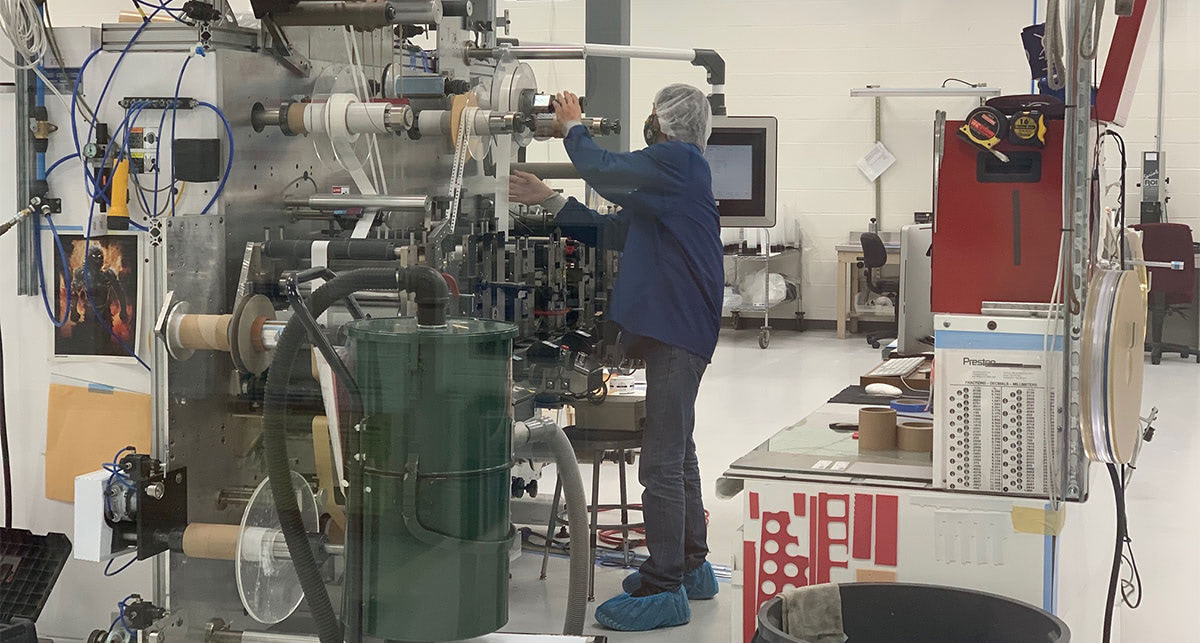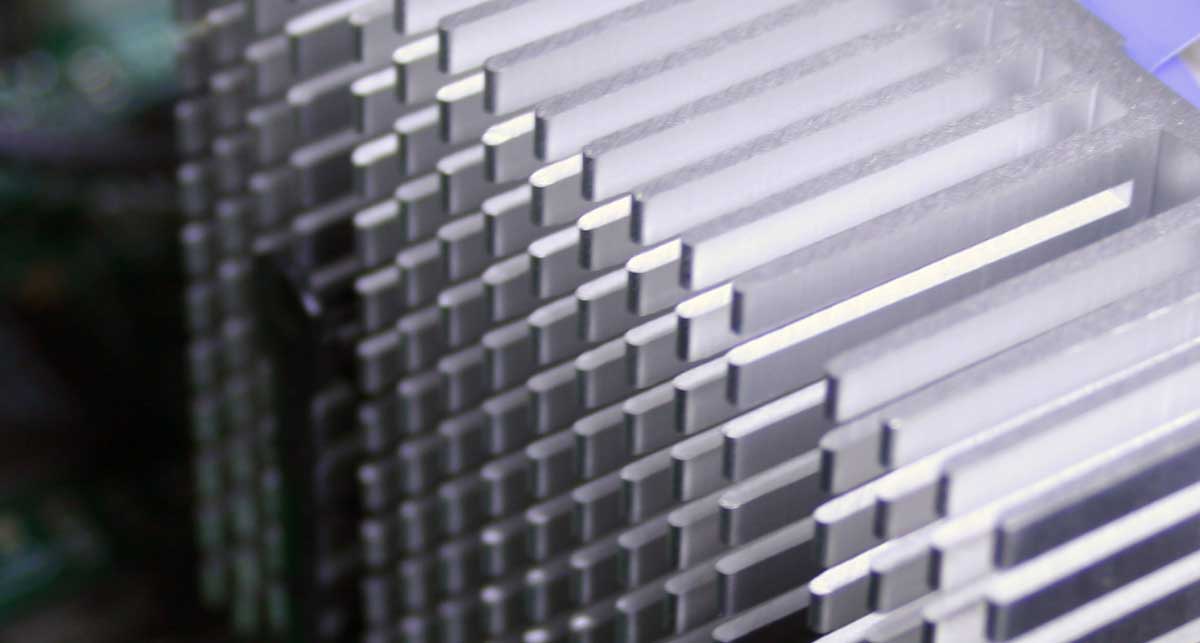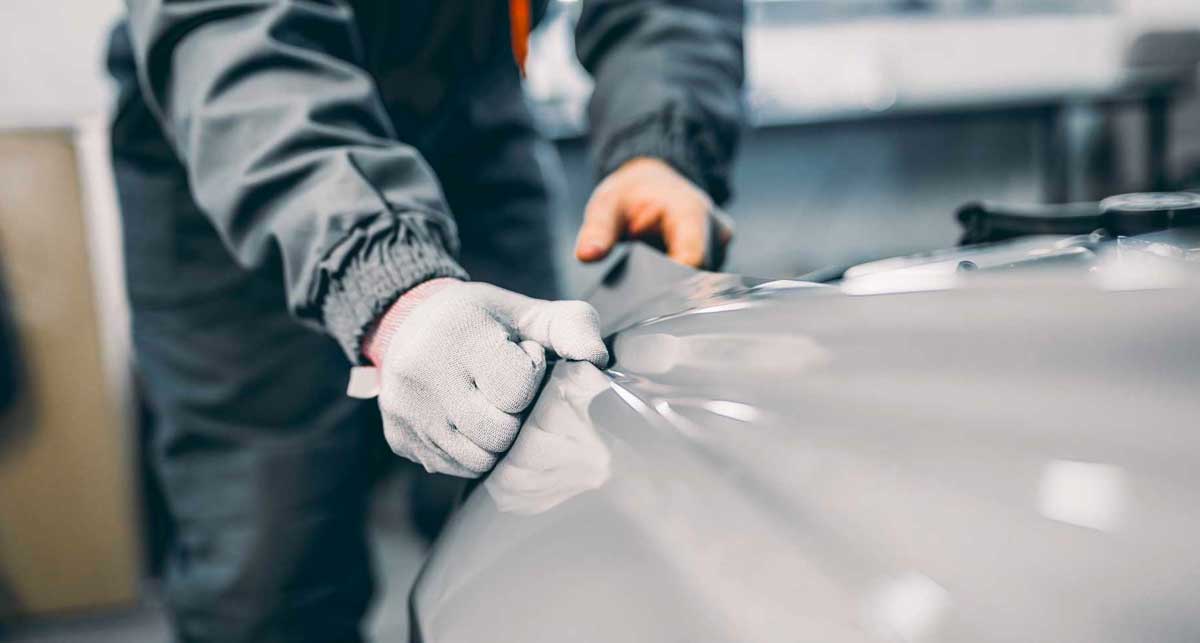It’s easy to get overwhelmed when you’re looking for the right manufacturing method. Over time, your motivation may even dwindle until you’re ready to select the first option just to have an immediate solution.
However, knowing what to look for in roll-to-roll processing can simplify your decision.
As a converter with over 38 years of experience, we recognize the importance of providing the upfront knowledge to help you decide whether roll-to-roll manufacturing fits your production needs.
In this article, we’ll review roll-to-roll manufacturing, its benefits, the different processing methods, and how to find a trustworthy partner.
What is Roll-to-Roll Manufacturing?
Roll-to-roll manufacturing (R2R) is the process of converting raw rolls of material into finished products on a roll. This is accomplished on a machine press through die cutting, printing, slitting/winding, adhesive lamination, or coating.
Flexible material converters are responsible for carrying out R2R processes using adhesive tapes and other materials for roll manufacturing.
Benefits of R2R Manufacturing
✅ One-pass production runs: allow manufacturers to complete multiple steps in quick succession
✅ High-speed production
✅ Less cost & transportation
✅ Finished parts are easily formatted for automation
✅ Reduced hand labor (+ minimized biological matter)
Types of Common Roll-to-Roll Processing Methods
Depending on your end goals, the material roll will undergo different R2R techniques. Here are examples of different methods and how they benefit you.
1. DIE CUTTING
What happens when you need individual products on a roll? Roll-to-roll rotary die cutting is a common roll-to-roll processing technique for cutting material into a given shape.
An operator loads rolls of raw materials onto one side of a machine press. The material then passes through rollers and die cut tools, which cut precise shapes onto the liner or backing and peel away excess material. Afterward, the newly cut material is re-rolled to facilitate easier part application of the freshly cut products.
Die cut parts on a roll are used in assembly line automation and other instances where high product quantities are best distributed from rolls.
2. LASER CUTTING
Rotary die cutting might not always be the right process for your part design, especially when your design features are too precise for hard tooling. In this instance, a manufacturer might use roll-to-roll laser cutting to make your parts. This requires an experienced converter to mount a laser onto the machine press and build a fluid one-pass production process.
3. PRINTING
The roll-to-roll printing process is often used to print labels, logos, or other markers onto rolls of material. For instance, in context, a converter might laminate tape onto a liner, print labels onto it, then kiss cut the label sticker shapes.
There are multiple types of roll-to-roll printing:
- Roll-to-roll digital printing
- Flexographic printing
- UV printing
- Thermal transfer printing
However, your ideal printing method will ultimately depend on the types of material and ink you use.
4. SLITTING/WINDING
You may not realize it, but suppliers often sell flexible materials like tape in massive logs about 21-60 inches wide. Roll-to-roll slitting consists of cutting large material rolls into smaller rolls for usability.
Different types of roll slitting services include log slitting and rewind slitting. Your choice will depend on the material you’re using, your project budget, and the tolerances you hope to achieve.
In this context, “winding” refers to the process of re-rolling materials into individual rolls after the machine has slit them.
5. ADHESIVE LAMINATION
Roll-to-roll lamination means running multiple materials together to combine them into a material stack. These material stack-ups can serve as differential double-sided tapes and in other applications.
For instance, roll-to-roll lamination might involve laminating a PET carrier between acrylic and silicone tape to create a differential double-sided acrylic-silicone tape.
6. COATING
Some projects require roll-to-roll coating processes, such as solvent, hot melt, water-based, UV-curable, or plasma coatings. These coatings serve different purposes, such as barrier layers or protective coatings to prevent corrosion. In addition, certain EV battery products may require positive or negative electrode slurry coatings on positive or negative copper foil.
Finding Trustworthy Roll-to-Roll Converters
By now, you’ve probably read enough to decide whether roll-to-roll manufacturing suits your project. So, how do you determine which type to use, and once further, which converter with that capability will you choose?
A lot of it comes down to their manufacturing capabilities. If a converter offers the services you’re looking for with your required quality standards, then they could be a good choice. However, just because they have the right capability does not mean they offer the right value or know how to use it correctly. Your converter should provide the value proposition that will match your specific project.
If you’re interested in speaking to a converter about a roll-to-roll solution, contact Strouse today for a free consultation. Otherwise, you can learn more about converting in our Learning Center.
Originally published: April 15, 2024






